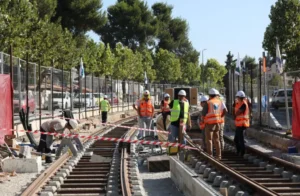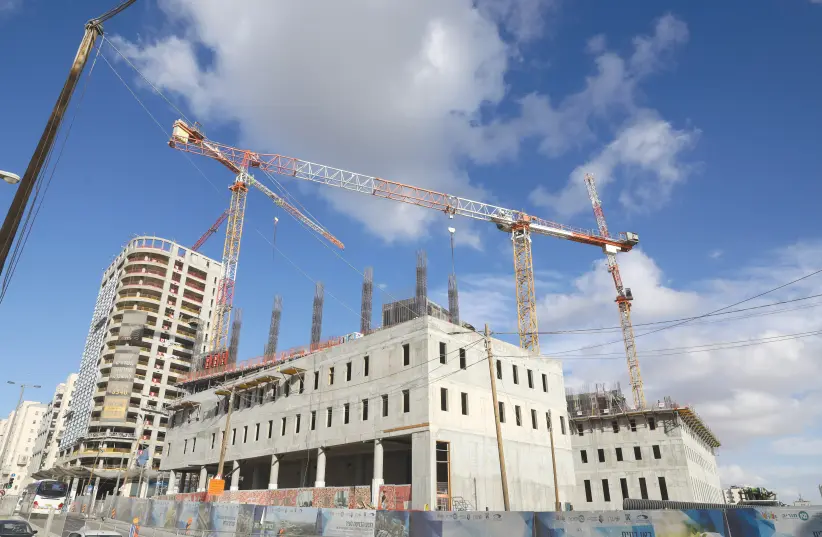MIDDLE ISRAEL: Jerusalem has never been considered a normal city, but maybe new innovations will make it so.

Having journeyed from England and now finally seen from afar Jerusalem’s skyline, medieval mystic Margery Kempe was convinced she was hearing God and was seized by an ecstatic tremor, so much so that she nearly fell off her donkey.
“Two German pilgrims went to her and kept her from falling off” and one of them “put spices in her mouth to comfort her,” she recalled in The Book of Margery Kempe. It was the first account of what today psychiatry diagnoses as Jerusalem Syndrome, a mental disorder that makes the city’s visitors think they are hearing God, or that they are one of the biblical prophets, or the Messiah, or even God himself.
Such mental cases are of course rare, but any survey of our beloved Jerusalem’s three millennia will indicate that its encounters with insanity have been anything but anecdotal, and in fact are what it’s all about.
Jerusalem’s story
This is a city where a queen slaughtered her kingdom’s nobility (II Kings 11:1), a town where hotheads provoked a chanceless war with a superpower, and where a mystic circling its walls claiming he was the Messiah was actually followed by his entire nation until his conversion to another faith.
This is the deeper backdrop against which a brave effort to normalize history’s capital of insanity is now underway, an effort that has never been more urgent, as the recent Ramadan’s violence on Temple Mount and tension toward next week’s Jerusalem Day, all make plain.
THE URGENCY is clear. This is the global capital of religious fanaticism and political zealotry, the spiritual reactor where believers loathe and harass other believers as if competing for a sleepy father’s love.

Jerusalem is not only a wellspring of lunacy and zeal but also an economic laggard whose average income, a monthly NIS 8,800, is 19% lower than the national average. At the same time, Jerusalem is a demographic balloon, having swelled since 1967 from hardly 270,000 inhabitants to 930,000. The result is unsustainable urban gridlock.
In other words, the town that over the centuries specialized in producing spiritual gospels now begs the kind of physical gospel to which its many prophets never paid thought.
Innovation in Jerusalem
Fortunately, three infrastructure projects are set to pick up from where Solomon, Herod, and mayor Teddy Kollek left off. Unfortunately, this development is meeting resistance – from religious zealots, finicky secularists, and near-sighted engineers. They should all be overruled.
The first, and most annoying of these projects, is the light railway, which has planted multiple construction sites along the city’s arteries.
The works are for the Red Line’s extension to Hadassah-University Medical Center in Ein Kerem, the IDF Central Command, and the Hebrew University’s two campuses; and for the creation of the Blue Line that will run from Ramot to Gilo; and the Green Line that will stretch from Gilo to French Hill.
The works are done the Israeli way, with repeated delays and no legally binding deadlines, but they are progressing. By the end of this decade, thousands of Jerusalemites will be using public transportation for much of what they currently do by car.
Resistance on this front comes from ultra-Orthodox hooligans who sabotage equipment at the construction site of a future underground hub on Bar-Ilan Street. They claim the train will plant a secularist engine in the thick of an ultra-Orthodox area, where an underground station is planned to include a strip of shops. Such saboteurs should be arrested, tried, and jailed as enemies of the public good.
The second project is about transportation to the Western Wall.
The current situation is that millions flock annually to the sacred plaza via the one narrow road that runs from Lions Gate to Mount Zion, as the even-narrower roads within the Old City are blocked to non-residents, and rightly so.
Salvation on this front will come from a cable car whose journey will start at the First Station recreation strip and end at the Old City’s Dung Gate, after unveiling a breathtaking view of the Christian Quarter’s spires, the Tower of David, the biblical Valley of Hinnom and the Dome of the Rock’s golden dome.
Opponents, in this case, are not ultra-Orthodox zealots, but fastidious secularists who claim the cable car will turn Jerusalem into a Disneyland and also tempt political troublemakers. Fortunately, there is no need to try these discontents, as they are good citizens who, instead of sabotaging the project, appealed to the Supreme Court. Even more fortunately, the court just ruled in favor of launching the project.
Yet the cable car and even the light railway dwarf compared to the City Gateway project, which will plant at Jerusalem’s western entrance nine skyscrapers of up to 40 stories, surrounded by 15 buildings of up to 12 stories, all of which will generate 60,000 jobs, mostly in hi-tech, finance, hospitality and entertainment.
The opposition here comes from municipal experts who say the project is a Pharaonic megalomania that will end up an under-occupied ghost town. They too are wrong. The new quarter will stem young adults’ migration to the coast. Moreover, attached to the fast train to Tel Aviv, it will make coastal professionals climb to work in Jerusalem.
Critics also fail to configure the effects of Israel’s breakneck social mobility.
Give this project two decades, and its glitzy offices, trendy cafés, and modern train stations will be brimming with thousands of ultra-Orthodox Jews and Palestinian Muslims gainfully employed as programmers, bankers, lawyers, accountants, architects, and anything else people do in office towers.
Will it be romantic? It won’t be, certainly not as romantic as the celestial city of which Isaiah, Jeremiah, and Jesus dreamt back when they roamed Jerusalem’s meandering alleys and radioactive shrines. It will, however, help make Jerusalem the unassuming, productive and sane city it never was.
www.MiddleIsrael.net
The writer’s bestselling Mitzad Ha’ivelet Ha’yehudi (The Jewish March of Folly, Yediot Sefarim, 2019), is a revisionist history of the Jewish people’s leadership from antiquity to modernity

